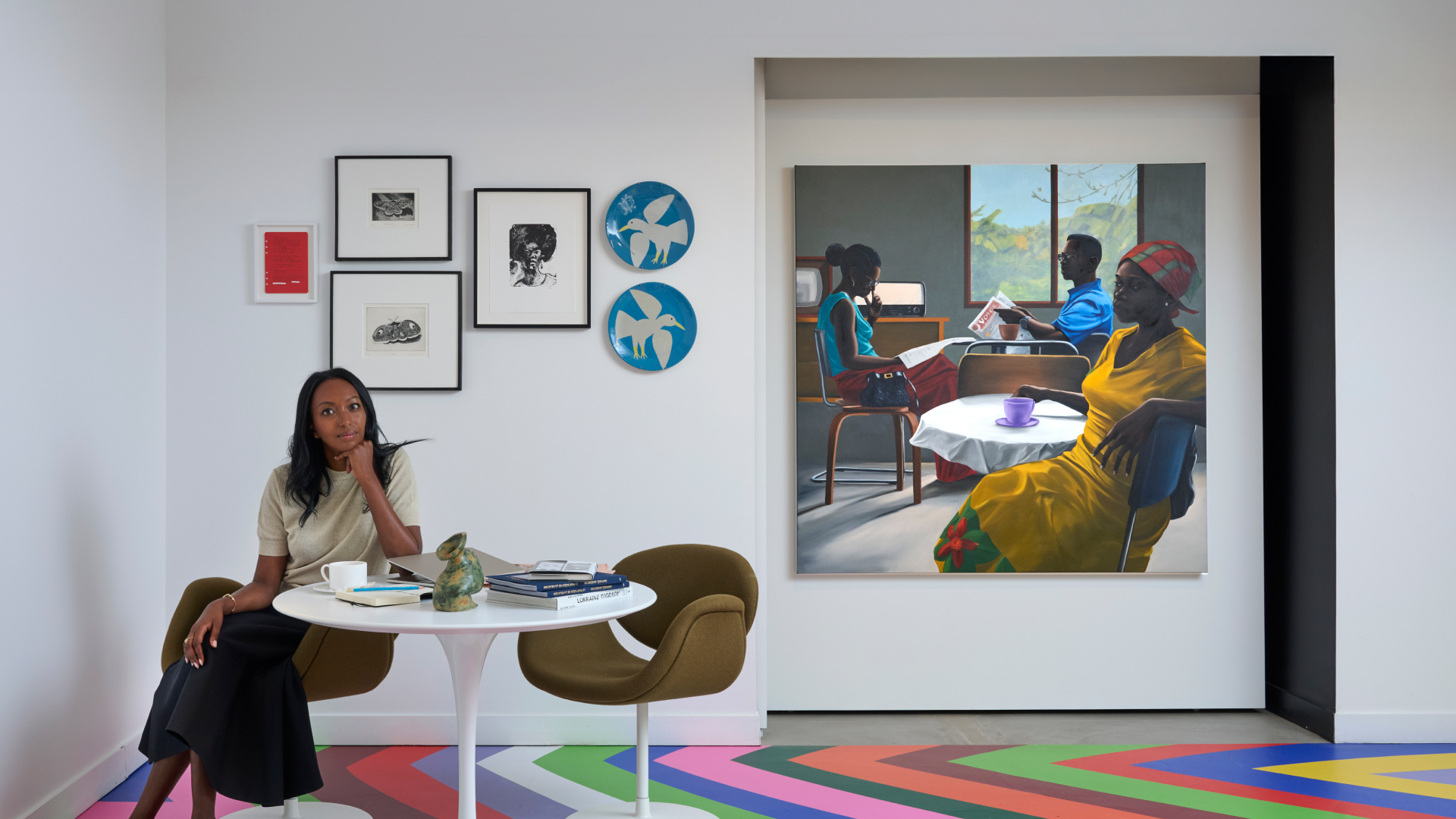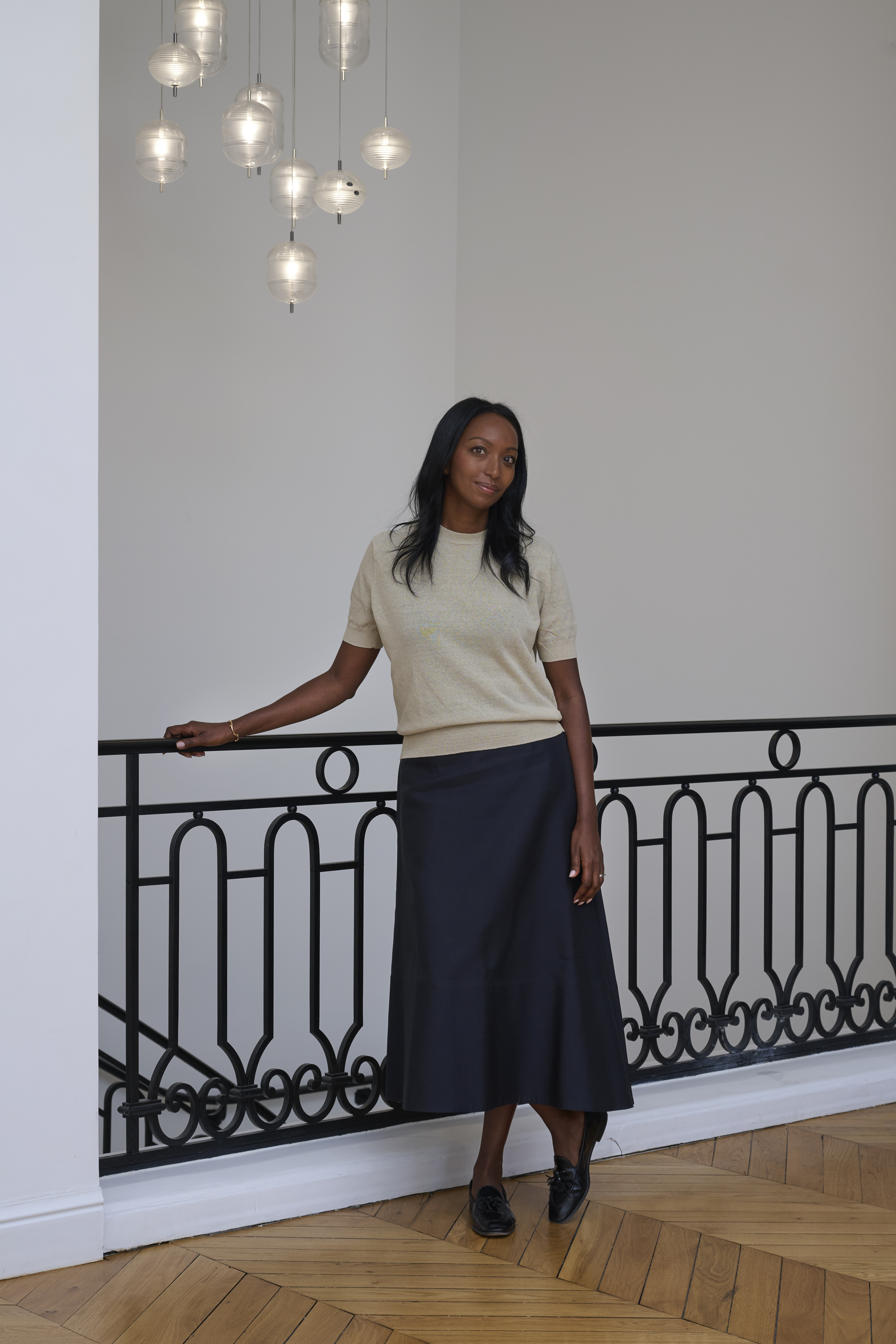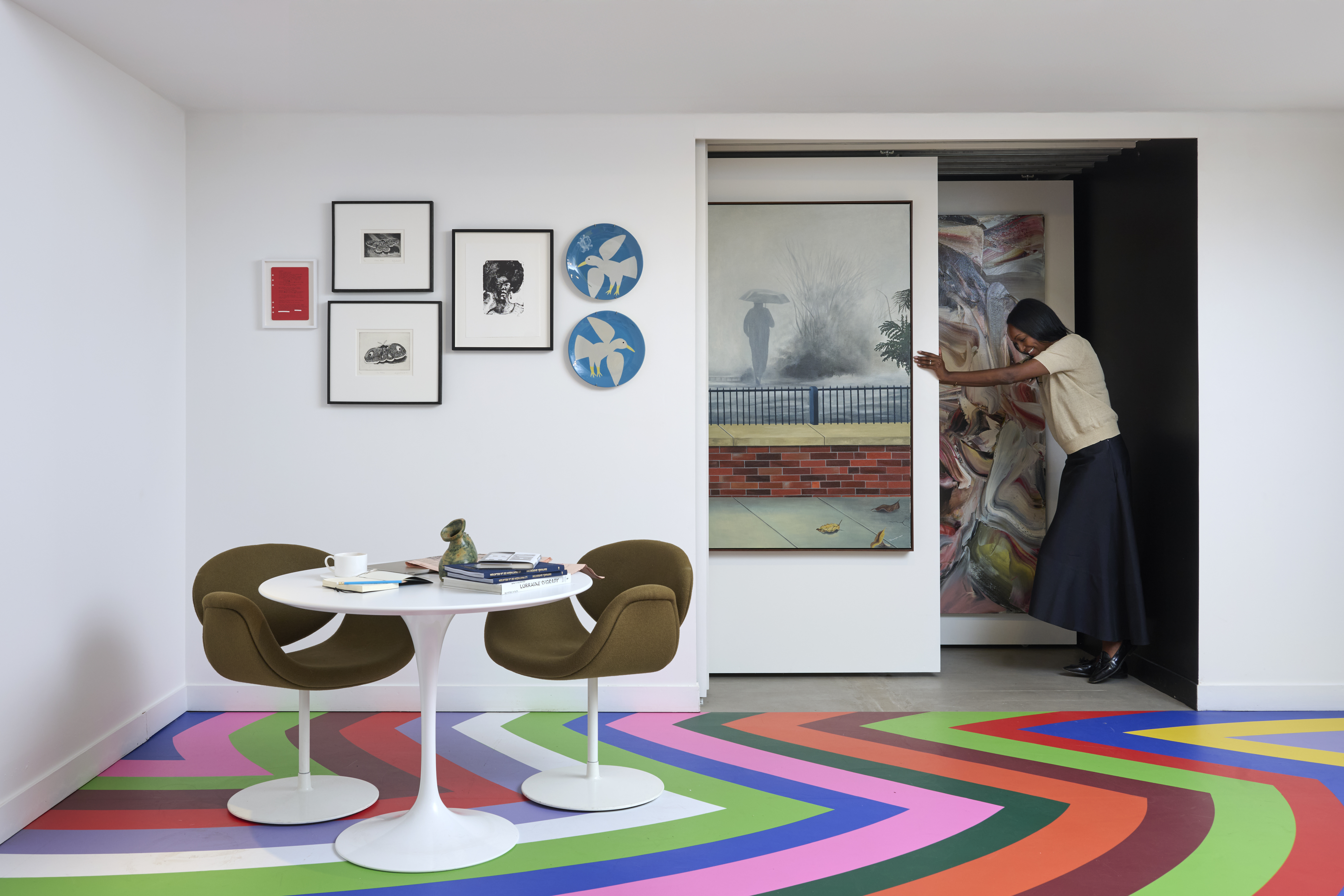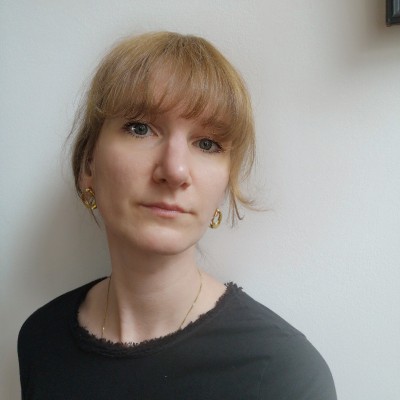Gallerist Mariane Ibrahim Is From "the Future"
"It’s how I represent myself—through the artists I present and the topics they explore."


Known for her impeccable and radical taste, Somali-French gallerist Mariane Ibrahim operates namesake galleries in Chicago, Mexico City, and Paris. In advance of her upcoming show in Mexico City, "SWIMMING POOL MAGAZINE DANCE [musings in Mexico City]," and her Chicago show "Once upon a midnight dreary," Marie Claire's Galia Loupon sits down with Ibrahim for a wide-ranging discussion.
MC: How did you become a gallerist?
MI: Being a gallerist is not a job you can apply to; it’s not taught anywhere. It’s a combination of knowledge and passion when it comes to art. I started out by trying to become an artist, I did photography for a bit. I had surrounded myself with young Afro-descendant artists in Paris, but I could see there was no space, no representation. So, I decided to act as their agent, to put together exhibitions, even though I didn’t have the first idea how to do it.
I was a good talker, which I got from my family. I grew up in a family of storytellers and poets, among women who were good at business. It was like, "If you have it, I can sell it.” But it also came from a place of deep belief, because why weren’t we being represented? Were we simply not good enough? No, we were invisible not for lack of talent, but because the platforms that would have allowed us to grow simply didn’t exist. And there was a lack of confidence, on behalf of both artists and collectors.
When people ask me where I’m from or where I live, I tell them I’m from the future.
MC: Is that why you opened your gallery in Chicago?
MI: Well, Mexico came first, but yes. Everyone was always telling me about New York, but I wanted to be free of that baggage, to sidestep it. When I discovered Chicago, I felt like it was the perfect city for me, because I like second cities. Maybe because I’m the second born.
Chicago had the institutions, the artists, an Afro-descendent and African-American population that was established, emancipated, in this tradition of Black excellence...Such a contrast with the situation of Afro-descendant people in France and the UK. I was looking at the scene in Chicago, and figured, maybe the only thing missing was an Afro-descendant gallerist.
Get exclusive access to fashion and beauty trends, hot-off-the-press celebrity news, and more.
MC: What about Mexico? You said that came before…
MI: Mexico is a deeply historic place. It’s exotic, it’s tropical urbanism. It’s also a country that has experienced colonialism. I was always fascinated by Mexico, I felt it was mine, in a way. It also has a little-known Black and Afro-descendant community.
It’s such a family-oriented place as well. All the museums are free, so every week, families get dressed in their Sunday best and go visit museums. It was so refreshing to experience after living in American individualism. And then I discovered the spaces and felt, "There is room here."
When I did my exhibition with Eva Jospin, she had never been to Mexico. I told her, “You’ll see, you’ll find your architecture, your baroque, it’s all here.” There have been many waves: Italian, Spanish, French. There is a small Paris here, but much more flamboyant and detailed, which coexists with the brutalist side of the city. You go from one thing to another—it’s very chaotic with tree roots breaking through the sidewalks. And there’s also their relationship to death. Very different from the Europeans, but even more so from the way Americans relate to mortality.
MC: You’re known for representing a lot of women artists.
MI: It may be unconscious, but I feel solidarity with women. Especially women who look like me.
I feel Afro-descendant women express things that come from their lives, of course—but also pressures that society or family are weighing down on them. Black women always have to do more than others to be equal. This situation, which is familiar to me, with which I empathize, has made me want to work with these women more, not only to protect them, but so that they can elevate me. And so, I’ve celebrated them as much as I can, and I still do: they are my muses, my friends, my sisters, and I aspire to grow with them.

MC: There's been plenty of research and reflection on the historic lack of women artists. What’s your view?
MI: I refuse to believe there are fewer women artists in history. But they didn’t have the same platforms, they weren’t celebrated in the same way. Just look at archives and publications—there isn’t nearly as much as there is about male artists. They didn’t get the exhibitions, the recognition. And the themes they were working on would have transformed another generation of women.
There are so many women artists who never had this intergenerational transmission. So young female artists or curators, when they get into a female artist of the past, they need to rediscover them. It takes research. Whereas a student looking into male abstract minimalist artists from the '60s has so much information available to them.
That’s why women artists haven’t created other women artists the way male artists have. Especially conceptual performance artists, those were just considered crazy women—keep away from them! Look at someone like Lorraine O’Grady, who I’ve worked with. Before recognition, which came quite late in her career, there was this long desert. And in that desert, there is poverty, marginalization. Only after a long while do people realize that you did have something to contribute.
MC: To an extent, we know things are improving at an institutional level—but what about the collectors? They aren’t as beholden to political pressure.
MI: Between 2020 and 2022, there was a bit of a craze—because of lockdowns and of everything that was going on politically. People got really into the young Afro-descendant scene. A real interest in the figurative aspect of this scene, something quite identitarian, with a focus on aesthetics and Black beauty.
So these artists experienced a really quick progression, but it was premature in many ways. To me, museums and institutions are the true barometer of an artist’s value. Private collectors operate in a market that is quite opaque. There is no real price reference; things happen on a case-by-case basis. Anyway, there was a big trend when it came to these artists, especially the men. And that enraged me, after a while, because I don’t think many of them deserved it. I fear that because of this, especially in the U.S.—and to be clear, it’s not at all what I wish, it is what I fear—there will be a rise in populism and identitarianism, and people will start feeling like it’s too much, these people are taking too much space.

MCI: What experience do you seek to provide for Black artists and collectors?
MI: There has been a long history of gatekeeping. Afro-descendant collectors were kept away from Afro-descendant artists for a long time, because these artists were quite avant-garde. I don’t know many Black collectors who have works by Basquiat, even though he was very political and pan-African. This has caused a lot of frustration. I’ve known people who’ve been collecting for over 20 years and often tell me they don’t have the same access as other collectors.
Now some artists are demanding that Black collectors be given access to their work. I worked in the opposite direction: my goal was to make these artists accessible to families, young collectors, people who want to celebrate their heritage. We’ve developed a beautiful community of Afro-descendant collectors for our artists. I’m very happy about that because it was a kind of mission for me to correct this gatekeeping, to give collectors as much access as possible to Black artists, without filtering them. And it shows.
I’m incredibly lucky to live in a time when I can sit at a table with an Afro-descendant curator, who will have developed the concept of an exhibition, with the Afro-descendant artist on one side and the Afro-descendant collector on the other.
MC: In your experience, what has changed in the art world?
MI: There was a time when people were unable to differentiate me from the artists I was showing. People would ask me if this was me, or my uncle, or my sister…They couldn’t imagine that a Black gallerist could work with Black artists from different cultures, from other countries that had nothing to do with my family.
I’m never asked this question anymore. It’s no longer “either or," now it’s “both and." It’s how I represent myself—through the artists I present and the topics they explore. I’m in Paris, Chicago, and Mexico City. When people ask me where I’m from or where I live, I tell them I’m from the future.
This interview has been edited and condensed.

Galia Loupan is the chief content officer of Marie Claire International, working on brand identity and coordinating content collaboration across Marie Claire editions around the world, including France, the UK, Russia, China, Australia, Argentina, and Turkey, among other countries. She is based in France.